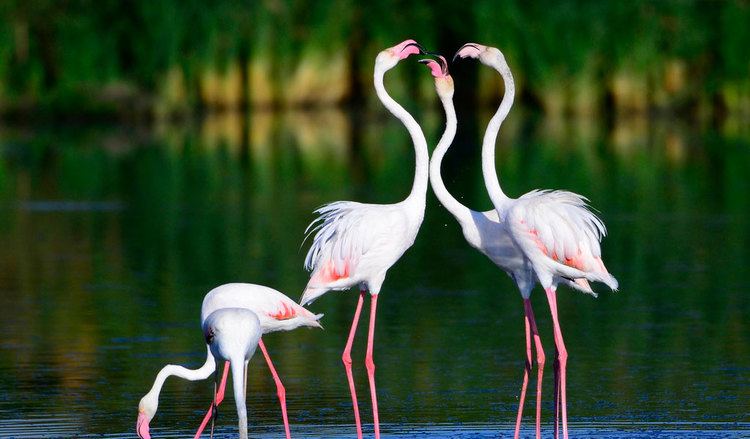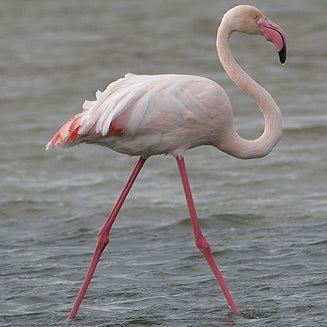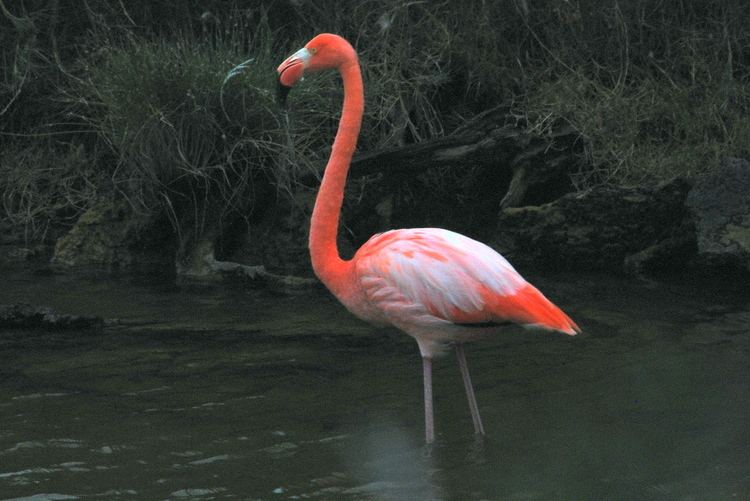Height 1.1 – 1.5 m (Adult) Higher classification Flamingos | Scientific name Phoenicopterus roseus Mass 2 – 4 kg (Adult) | |
 | ||
Similar Flamingos, Bird, American flamingo, Phoenicopteridae, Lesser flamingo | ||
Gujarat s state bird greater flamingo
The greater flamingo (Phoenicopterus roseus) is the most widespread species of the flamingo family. It is found in Africa, on the Indian subcontinent, in the Middle East and southern Europe.
Contents
- Gujarat s state bird greater flamingo
- Birds of a feather flock together greater flamingos in thol lake
- Description
- Distribution
- Lifespan
- Captivity
- Threats
- References

Birds of a feather flock together greater flamingos in thol lake
Description

This is the largest species of flamingo, averaging 110–150 cm (43–59 in) tall and weighing 2–4 kg (4.4–8.8 lb). The largest male flamingos have been recorded at up to 187 cm (74 in) tall and 4.5 kg (9.9 lb). It is closely related to the American flamingo and Chilean flamingo, with which it has sometimes been considered conspecific.

Like all flamingos, this species lays a single chalky-white egg on a mud mound. Most of the plumage is pinkish white, but the wing coverts are red and the primary and secondary flight feathers are black. The bill is pink with a restricted black tip, and the legs are entirely pink. The call is a goose-like honking.

Sub-adult flamingos are whitish grey and only attain the pink coloration several years into their adult life. The coloration comes from the carotenoid pigments in the organisms that live in their feeding grounds. Secretions of the uropygial gland also contain carotenoids. During the breeding season, greater flamingos increase the frequency of their spreading uropygial secretions over their feathers and thereby enhance their color. This cosmetic use of uropygial secretions has been described as applying "make-up".

The bird resides in mudflats and shallow coastal lagoons with salt water. Using its feet, the bird stirs up the mud, then sucks water through its bill and filters out small shrimp, seeds, blue-green algae, microscopic organisms and mollusks. The greater flamingo feeds with its head down and its upper jaw is movable and not rigidly fixed to its skull.
Distribution

It is found in parts of Africa, southern Asia (Bangladesh and coastal regions of Pakistan, India, and Sri Lanka), the Middle East (Turkey, Israel, Lebanon) and southern Europe (including Spain, Albania, Macedonia, Greece, Cyprus, Portugal, Italy and the Camargue region of France). The most northern breeding spot is the Zwillbrocker Venn in Western Germany, close to the border with the Netherlands. In Gujarat, a state of India, flamingos can be observed at the Nal Sarovar Bird Sanctuary, Khijadiya Bird Sanctuary, Flamingo City and in the Thol Bird Sanctuary. They remain here during entire winter season.
Lifespan
The average lifespan in captivity, according to Zoo Basel, is over 60 years.
Captivity
The first recorded zoo hatch was in 1959 at Zoo Basel. In Zoo Basel's breeding program over 400 birds have been hatched with an average of between 20 and 27 per year since 2000. The oldest known greater flamingo was a bird at the Adelaide Zoo in Australia who died aged at least 83 years old. The bird's exact age is not known; he was already a mature adult when he arrived in Adelaide in 1933. He was euthanized in January 2014 due to complications of old age.
Threats
Adult flamingos have few natural predators. The primary threats to flamingo populations are bacterias, toxins and pollutions in the waters supplies, which is usually run-off from manufacturing companies, and encroachment of their habitat.
